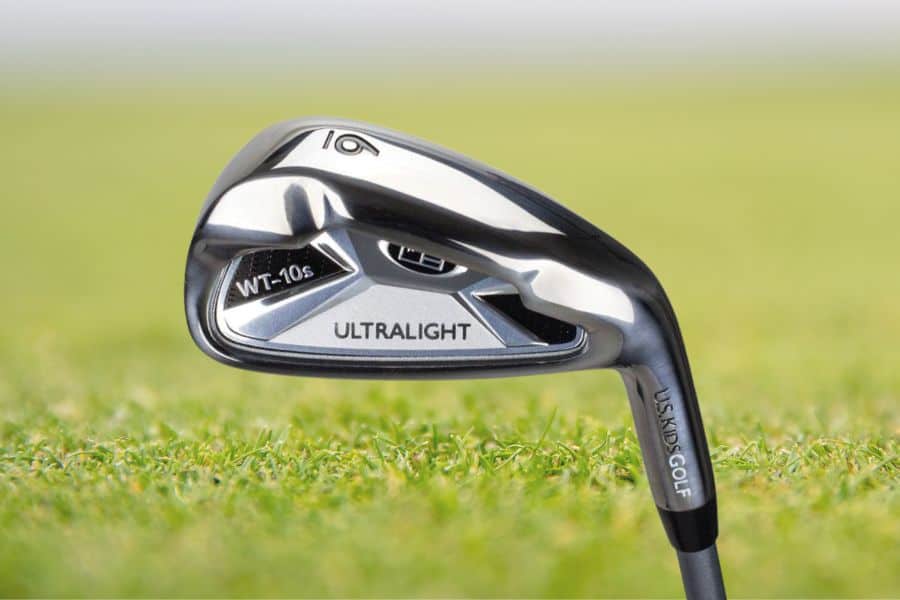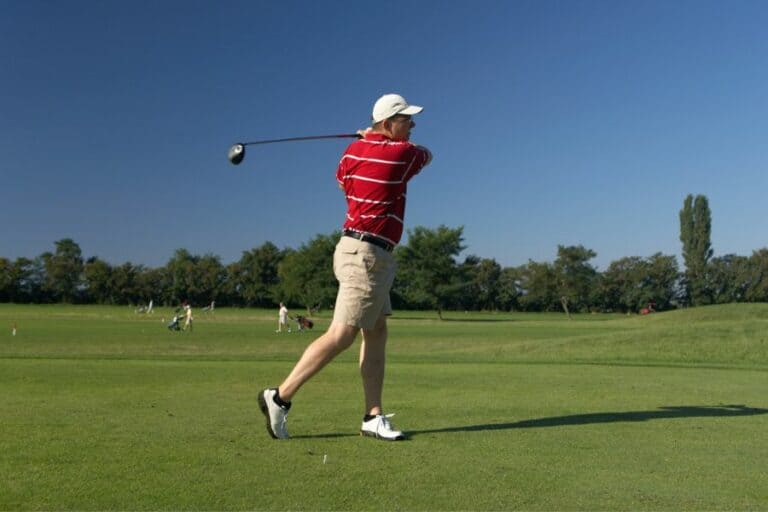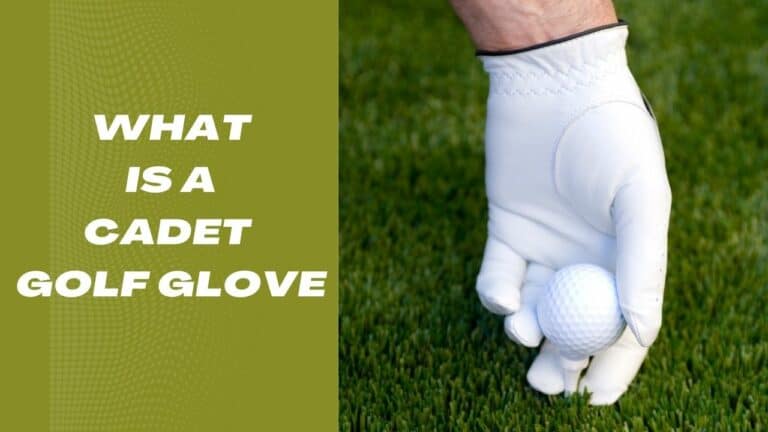Unlocking The Power Of The 6 Iron: A Complete Guide

Learn everything you need to know about golfing with a 6 iron, from usage to advantages and disadvantages- so you can hit your shots with precision and power.
Golfers of all skill levels are always looking for ways to improve their game. One club that can help unlock a new level of power and accuracy is the 6 iron.
With its diverse range of shots and precision, the 6 iron can be a valuable asset in your golf bag, giving you an advantage on the golf course.
Read on to learn everything about 6 iron, from its usage to its advantages and disadvantages, helping you achieve the results you desire.
What is a 6 Iron golf club?
A 6-iron is a mid-range golf club that provides more distance than a higher-lofted club like a 9-iron and better control than a lower-lofted club like a 3-iron. It is a versatile club useful for getting out of challenging positions on the course, making it valuable for intermediate and advanced golfers to execute accurate shots.
When should you use a 6 Iron golf club?
You can execute various types of golf shots using a 6-iron golf club. Below is a list of the different types of shots and the appropriate situations to use them:
Approach shots
The 6 iron is ideal for a full-swing approach shot towards the green. Determine the distance you can hit with the club and aim for the center of the green.
Its responsiveness allows for the possibility of shaping the ball with a fade or draw. A well-executed 6 iron approach shot produces a high ball trajectory, abundant spin, and controlled path.
Tee shots
To excel in golf, controlling a golf shot from the tee box is crucial. For a par 3, you only have one chance to hit the golf ball perfectly. Therefore, some golfers practice a ¾ swing with their 6 iron, resulting in high accuracy and control. Golfers should also learn how to hit a less powerful 6 iron shot accurately, a technique that is regularly required on the golf course.
Punch shots
The knockdown shot, also known as a punch shot, is an essential skill for golfers looking to lower their ball flight and navigate windy conditions. This technique involves hitting the ball with a lower trajectory, allowing it to travel under the wind and achieve maximum distance.
To execute the knockdown shot successfully, many players prefer using a 6-iron due to its ideal loft that provides the necessary control and forgiveness. While this shot can result in some roll when landing on the green, its versatility makes it worth practicing on the driving range.
By mastering this technique, you’ll be able to tackle difficult weather conditions and add another valuable skill to your golf game.
What is the average 6 Iron length?
The length of a 6-iron club differs based on gender and the material of the shaft. Women’s clubs have shorter shafts than men’s clubs, which is attributed to the difference in average height between genders. Additionally, graphite shafts are generally longer than steel ones.
- The standard lengths for a steel 6-iron are 36.5 inches for women and 37.5 inches for men.
- For a graphite 6-iron, the standard lengths are 37 inches for women and 38 inches for men.
It’s worth noting that these are just standard lengths, and customization is possible to fit individual players’ heights.
What is the average 6 Iron loft?
A 6-iron club typically has a loft of 30 degrees, while most manufacturers produce clubs with lofts ranging from 24 to 31 degrees. However, a decade ago, game-improvement 6-irons had an average loft of 29 degrees.
Choosing a club with a suitable loft can also affect the distance and trajectory of your shots. If you prefer a higher trajectory, you should opt for a club with a higher loft, and if you prefer a lower trajectory, a club with a lower loft is a better choice.
How far does a 6 Iron go?
The distance achieved with a 6-iron can vary depending on several factors, including the player’s age, swing speed, skill level, and playing conditions. These variables can impact the ball’s trajectory and ultimately affect how far it travels.
While some golfers may be able to hit their 6-iron farther than others due to these factors, here is a general overview of the average distances that players can achieve based on their skill levels:
| Player Skill Level | 6 Iron Distance for Men | 6 Iron Distance for Women |
| Tour Pros | 180-230 yards (PGA Tour Pros) | 150-160 yards(LPGA Tour Pros) |
| Low Handicappers | 160 yards | 130 yards |
| Mid Handicappers | 150 yards | 100 yards |
| High Handicappers | 135 yards | 80 yards |
| Beginner golfers | 130 yards | 70 yards |
6 Iron swing speed
Your swing speed is crucial in determining the average distance you can achieve when hitting with a 6-iron. To provide an idea of what to expect, here is a chart that displays the average swing speeds for players of different skill levels:
| Player Level | Swing Speed For Men | Swing Speed For Women |
| Tour Pros | 92 mph or above | 78 mph or above |
| Low Handicappers | 85 mph or above | 80 mph or above |
| Mid Handicappers | 70 mph or above | 60 mph or above |
| High Handicappers | 60-70 mph or above | 60 mph or below |
Pros and cons of using a 6 Iron
Most amateur golfers consider the 6 iron a versatile club that can be used in various situations on the course. However, like any other club, there are pros and cons to using a 6 iron.
Pros Of 6 Iron
Cons Of 6 Iron
How to hit a 6 Iron golf club?
To hit a 6-iron golf club effectively, follow these steps:
- Set up your stance by positioning the ball slightly forward or center in your stance and aligning your feet, hips, and shoulders parallel to the target line.
- Grip the club with a neutral grip, with your left hand positioned over the shaft and your right hand below it.
- Begin your backswing by turning your shoulders and shifting your weight to your back foot. Keep your wrists firm and your club head on the swing plane.
- Start your downswing by shifting your weight back to your front foot, turning your hips toward the target, and allowing your arms to drop to the inside.
- Keep your head down and your eyes on the ball as you make contact, striking the ball with a slightly descending blow.
- Follow through by extending your arms and wrists toward the target, and complete the swing with a smooth finish.
6 Iron vs. 7 Iron vs. 8 Iron vs. 9 Iron Golf clubs
Compared to the 6 iron and 9 iron, the 7 iron is considered the “sweet spot” between mid and short irons. It provides forgiveness and impressive distances, making it reliable for mid-range shots. However, it is important to consider their differences when choosing between 6, 7, 8, and 9 irons.
| Iron | Iron Type | Average Distance | Loft Angle | Recommended Skill Level |
| 6 Iron | Mid irons | 150 yards | 24-31 degrees | Pros and low handicappers |
| 7 iron | Mid irons | 140 yards | 34-36 degrees | All skill levels |
| 8-iron | Short irons | 130 yards | 35-39 degrees | Low and mid handicappers |
| 9 iron | Short irons | 120 yards | 41-43 degrees | Pros and low handicappers |
Can you chip with a 6 Iron?
Yes, using a 6-iron chip to get out of a tough lie or make a long chip is possible. However, striking the ball will require significant adjustments.
Conclusion
The 6 iron golf club is versatile and available in different lengths and flexes to suit individual golfers. It is a great club for practicing and improving one’s game due to its usability in various situations. Additionally, it is beginner-friendly and forgiving, making it a good choice for those starting out in the sport.








